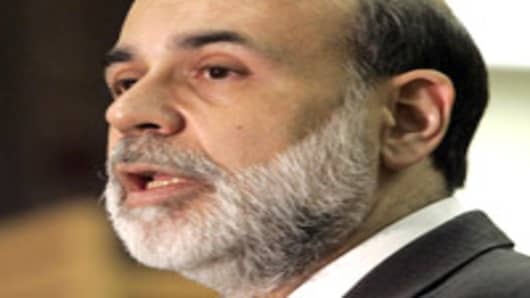A Fed source, told CNBC's Steve Liesman that the Fed still has under active consideration a set of tools to address the liquidity issue.
The source, who asked not to be named, would not say what those tools are, but Liesman's senses these ideas will see the light of the day sooner rather than later.
In the past, Fed sources have mentioned about the effort to come up with creative ways to address the liquidity crunch that did not necessarily use the fed funds rate. Ideas have included lowering the spread between the discount window and the funds rate, or long-term repo actions that put more cash into the market for a long period of time.
Clearly, other ideas are being discussed in addition to this. It's reasonable to assume that the Fed was less than happy and maybe a bit concerned with the market's reaction to the decision today. With the chief concern that today's action is the sole Fed response to the liquidity crunch.
With home prices sliding and borrowing conditions tightening, many forecasters are warning that the economy is skirting close to recession.
The No. 2 official at the International Monetary Fund said in an interview published on Tuesday that U.S. recession fears were overblown.
"Never say never, but the latest indicators do not justify such a conclusion," IMF First Deputy Managing Director John Lipsky told an internal IMF publication."


